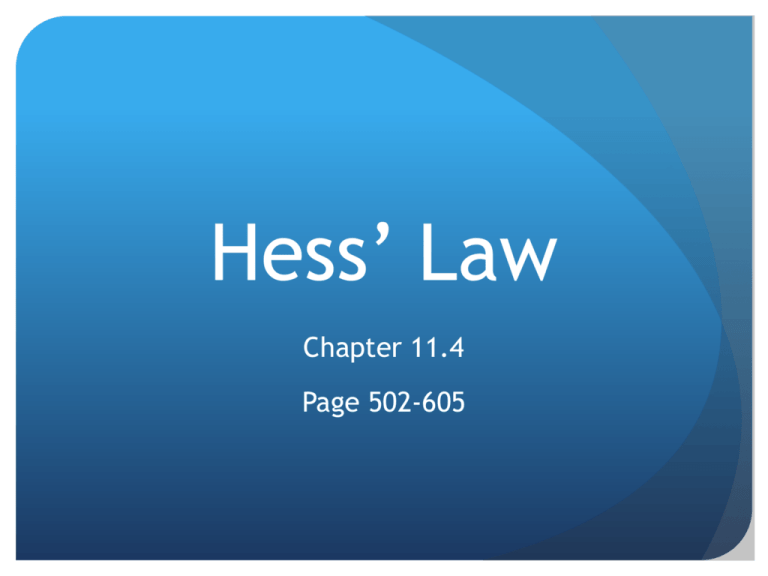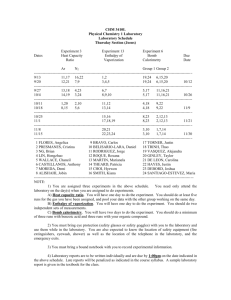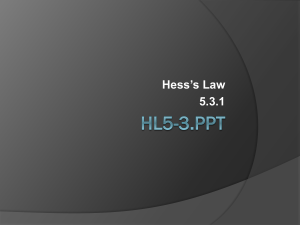4-Hess' Law - Science-with
advertisement

Hess’ Law Chapter 11.4 Page 502-605 Hess’ Law Not all chemical energy changes can be studied conveniently using simple calorimetry. Methods used to study these reactions are based on the principle that net changes in all properties of a system are independent of the way the system changes from the initial state to the final state. Predicting ΔrH: Hess’ Law Hess’ law states that the addition of chemical equations yields a net chemical equation whose enthalpy change is the sum of the individual enthalpy changes. ΔrH° = Δ1H° + Δ2H° + Δ3H° + … = ΣΔrH° Two things to remember: • If a chemical equation is reversed, then the sign of ΔrH changes. • If the coefficients of a chemical equation are altered by multiplying or dividing by a constant factor, then the ΔrH is altered by the same factor. Sample Problem Use Hess’ law to determine the standard enthalpy change for the formation of carbon monoxide. C(s) + ½ O2(g) CO(g) ∆fH°= ? Use the following given equations and their standard enthalpy changes. Rearrange the equations so that you can obtain the chemical equation for the formation of carbon monoxide: C(s) + O2(g) CO2(g) ∆1H°= -393.5 kJ CO2(g) CO (g) + ½ O2(g) ∆2H°= +283.0 kJ Now add the reactants, products and standard enthalpy changes to get a net reaction reaction: C(s) + ½ O2(g) CO(g) ∆fH°= -110.5 kJ Another Example... In an experiment to find the standard molar enthalpy of formation of butane (from it’s elements), the following values were determined by calorimetry: Hint: Make sure to find the net equation first! Answer... ∆fHm°= -125.6 kJ/mol Note: You should have only flipped the first equation and remember, it was asking for molar enthalpy. Since you were not given any mass, you use the number of moles in the equation (1 mole) Read pgs. 502 – 504 pgs. 504, 505 Practice #’s 1 – 4 pgs. 508 – 509 Section 11.4 Questions #’s 1 – 10








